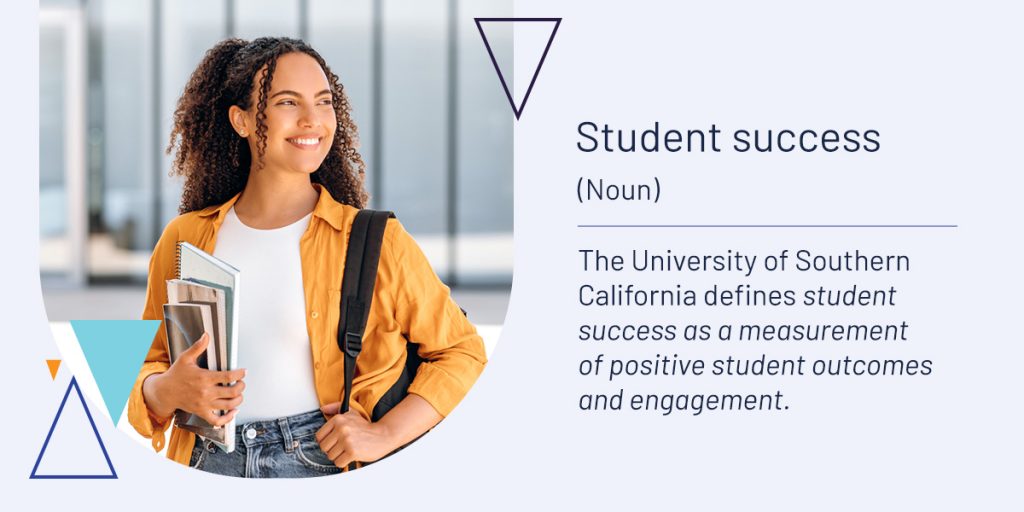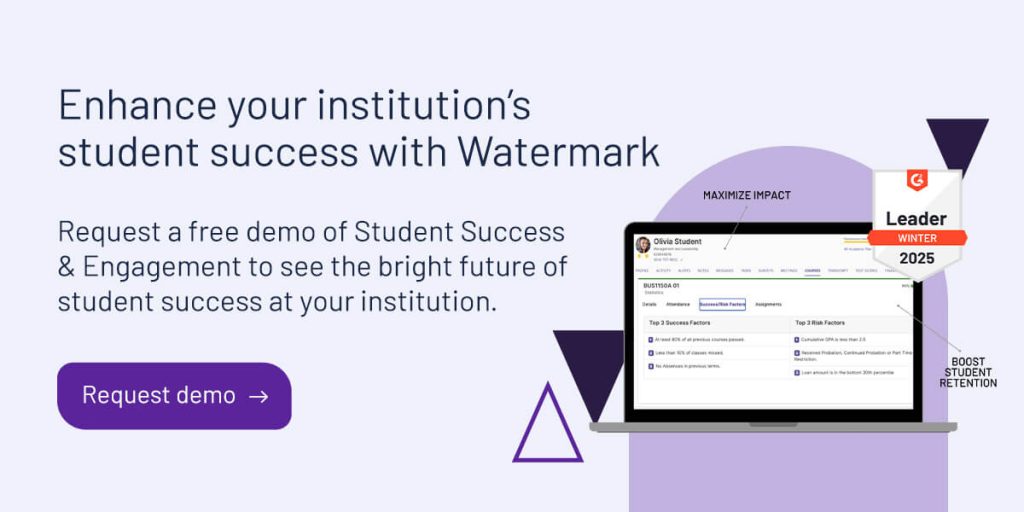
Student success is an integral part of higher education institutions. Higher learning institutions and departments across various fields have prioritized student success and tried various strategies to improve student outcomes. As higher education becomes more innovative, competitive, and complex, implementing strategic plans for optimizing student success has become more critical than ever before.
Despite this shared commitment, institutions differ in how they define student success and how much measurable progress they make in enhancing it. Explore why student success is so vital to your higher education institution and how you can unlock the potential of your students to succeed.
Why is student success important for higher education?
Student success is an essential part of higher education and is often one of the top priorities for institutional leadership. One reason for this is that, when students succeed, it reflects well on their institutions. Along with the student’s own efforts, the recipe for student success in higher education includes quality teaching, a well-designed curriculum, effective assessments, and accessible support resources. Excellent student outcomes indicate that the institution is fulfilling its roles in these areas.
Student success is also crucial for the students themselves. Many higher education institutions aim to assist students who are more likely to drop out, such as first-year, minority, and marginalized students. Investing in student success is integral to helping them, as increased academic success is linked to student happiness and well-being. Driving positive student outcomes leads to students being happier during their studies and better prepared for career accomplishments after graduation.
Many states tie funding to performance measures like graduation and retention rates, so vigilance about student success can enhance an institution’s financial resources. For example, of the 12 Midwestern states, six tied public four-year funding to student outcomes, while seven tied public two-year funding to student performance.
Institutions pursuing accreditation must prioritize student outcomes to meet accreditor standards. Standards vary between accreditors, but student success metrics are staple considerations. Every investment in student success is an investment in achieving or maintaining accreditation.
How do higher education institutions define student success?

To optimize your strategies for enhancing student success, you need to explore what it means at your institution. While many institutions have their own perspective on success, a general definition includes accomplishing the goals each student has set for their higher education. The University of Southern California defines student success as a measurement of positive student outcomes and engagement. Tangible expressions of these outcomes include:
- Graduation rates
- Number of successful course completions
- Retention or persistence rates
- Academic achievement
- Degree attainment
- Milestone of credits completed
- Student advancement
Each component plays a role in the institution’s critical decision-making process. Looking at the data collected from these metrics allows institutions to determine which changes are necessary to improve student outcomes. Students and educational institutions benefit when a collective effort focuses on student success. How your facility defines success may differ from other institutions, so whatever KPIs you emphasize, ensure your measuring criteria are clear.
How can institutions improve student success in higher education?
There are several methods that your institution can use to promote student success. These simple tips will help you support your students in realizing their potential:
- Get to know students: It’s easy for students to get lost in the system, especially in larger institutions. For students to succeed, they need to feel like their voices are valued. Gather as much information as possible about their backgrounds, strengths, challenges, and goals. Use student surveys and course evaluations to understand what your students need to succeed.
- Match students to appropriate resources: Once you know your students, you can personalize the types of resources they can access. These resources include financial, academic, social, mental health, and physical health support. While some students may explore some resources more than others, a holistic approach can improve student outcomes.
- Provide continuous support: Students often only receive the support they need in the first few months of enrollment. Success in college is a long-term goal — students need help throughout the journey. Student advisors need to be engaged and proactive by monitoring and checking in on students throughout their degrees.
- Leverage analytics: Every institution’s resources are limited. This makes it vital to invest faculty time and support resources where they are most needed to drive student success. Predictive and prescriptive analytics can use course data to identify students at risk of disengaging and recommend interventions to help them succeed. This allows faculty to provide proactive support to students who need it, when they need it. This support could include academic assistance, counseling, or financial aid.
- Personalize learning: Whether through automated, AI-driven adaptive learning, or collaboration on customized learning pathways between lecturer and student, personalized learning can improve student engagement by catering to individual learning styles and strengths. One recent review found that personalized or adaptive learning increased academic performance in 59 percent of research studies and showed potential to increase engagement.
- Encourage a growth mindset: Some institutions encourage students to have a growth mindset that embraces each step of the learning journey rather than just the final result, recognizing that challenges along the way are normal. A growth mindset also helps students who have to take courses that don’t directly contribute to their degree. They can see the value that these courses add to their success.
- Make services accessible: Technological advances have made learning materials more accessible to many students. Explore technology trends to enhance learning and ensure students can access materials anywhere and anytime.
- Create an inclusive and equitable campus: Students who succeed in higher education environments have a sense of belonging and feel valued. Institutions that value a diverse student community create a sense of pride in students. They support every student’s success regardless of race, gender, sexual orientation, religious beliefs, disability, or socioeconomic status.
Enhance your institution’s student success with Watermark
Monitoring and improving crucial metrics like grades, graduation rates, and retention depends on data. With Watermark Student Success & Engagement, your institution can unlock the insights you need to drive lasting student success. This innovative software collects and analyzes data from your LMS and other platforms to predict student progress, identify risks, and guide smart interventions.
Student Success & Engagement is easy to implement with our industry-leading customer support. It can help your institution:
- Support the unique needs of each student’s journey.
- Customize guided learning pathways for each student.
- Boost retention through predictive and prescriptive analytics.
- Support students wherever they are with our native mobile app.
- Demonstrate your student outcomes to accreditors and funders with streamlined reporting.
Request a free demo of Student Success & Engagement to see the bright future of student success at your institution.
















































































































































































































































































































































































































